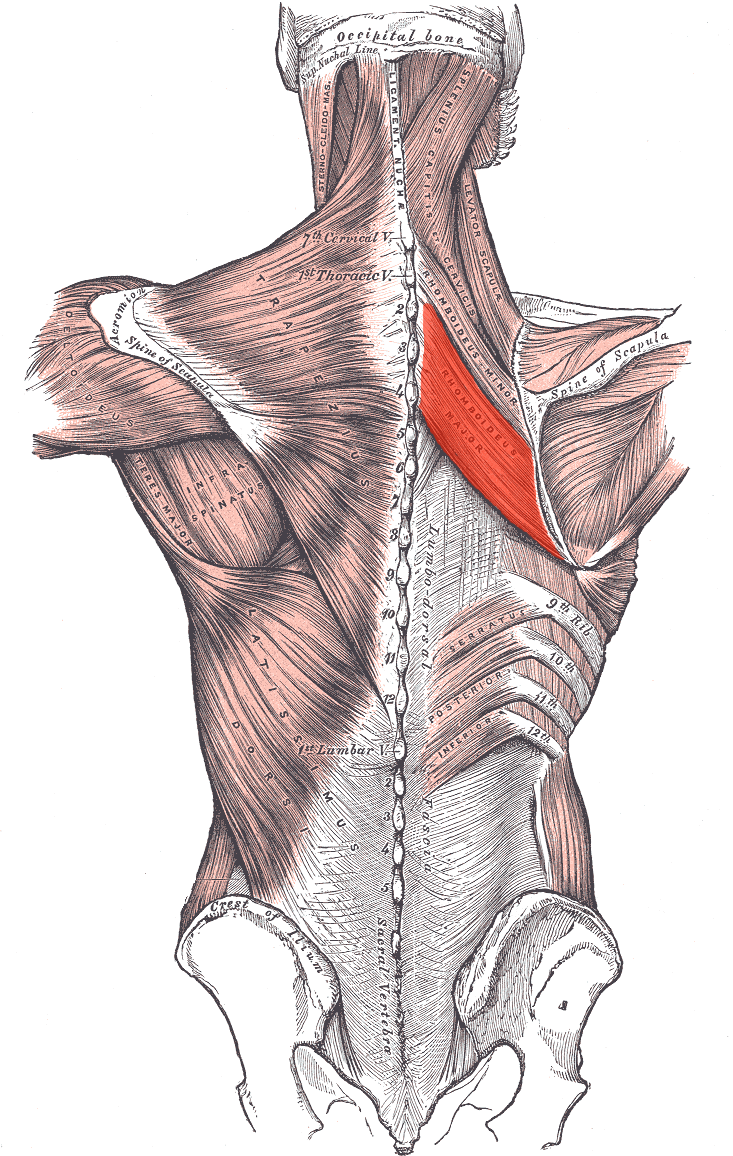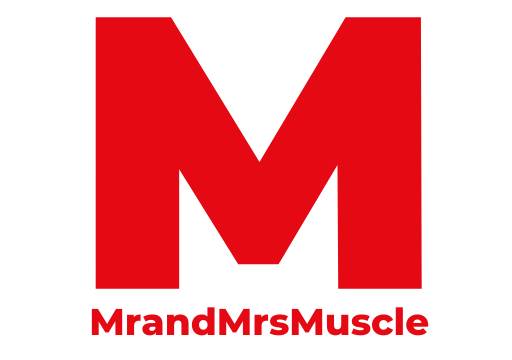What is the rhomboid major muscle?
The rhomboid major is a muscle located in the upper back that connects the shoulder blade to the spine. It works in conjunction with the rhomboid minor muscle and the middle and lower trapezius muscles to control scapular movement and stability.
The rhomboid major is essential for activities that involve arm movements such as throwing, lifting, and swimming. It also works to maintain proper posture when sitting or standing. (1)
Origin, insertion and function
Origin:
The Rhomboid major originates from the spinous processes of the thoracic vertebrae (T2 to T5).
Insertion:
The muscle inserts on the medial border of the scapula, specifically on the root of the spine of the scapula.
Function:
The rhomboid major muscle is responsible for several actions in the upper back and shoulder region. It is responsible for:
- Retracting the scapula, which means pulling it toward the spine.
- Rotating the scapula, which means tilting it so that the glenoid cavity (the socket for the arm bone) faces forward.
- Stabilizing the scapula during movement, which means keeping it in a stable position while the arm is moving.

Common signs of rhomboid major weakness
Common signs of weakness in the rhomboid major muscle can include:
- Poor posture, with rounded shoulders and a forward head position.
- Difficulty maintaining a stable scapula during arm movements, such as lifting or reaching.
- A tendency to compensate for weak rhomboids by using other muscles, such as the upper trapezius or levator scapulae, leading to muscle imbalances and pain in these areas.
- Pain or discomfort between the shoulder blades, which can be caused by the scapula not being held in the correct position.
- Weakness or pain when performing exercises that target the rhomboids, such as rows or pull-ups.
- A difficulty lifting or reaching overhead
- Difficulty in performing activities that involve arm movements such as throwing, lifting, and swimming.
It’s important to note that these symptoms are not specific to only rhomboids weakness and can be caused by other muscle or joint problems as well. It’s always a good idea to consult with a healthcare professional for a proper diagnosis and treatment plan.
Exercises to strengthen the rhomboid major
There are several exercises that can help to strengthen the rhomboid major muscle:
Dumbbell rows: This exercise targets the rhomboids, as well as the lats and the middle trapezius. Hold a dumbbell in each hand and bend forward at the hips, keeping your back straight. Pull the dumbbells up towards your sides, squeezing your shoulder blades together as you lift.
Pull-ups or chin-ups: These exercises work the rhomboids as well as the lats and biceps.
Reverse Fly: This exercise targets the rhomboids and the middle and rear deltoids. Hold a dumbbell in each hand and stand with your feet shoulder-width apart. Bend forward at the hips and extend your arms out to the sides, keeping your elbows slightly bent. Bring your arms back in towards your body, squeezing your shoulder blades together as you lift.
Scapula Retraction: This exercise targets the rhomboids, middle and lower trapezius, and is performed by standing or seated with your back straight and your arms out in front of you. Slowly pull your shoulder blades back and together, hold the contraction for 2 seconds then release.
Y-T-I raises: This exercise targets the rhomboids and the middle trapezius. Stand or seated with your arms extended out to your sides and your thumbs pointing up. Slowly raise your arms up to form a Y shape, then a T shape, and finally, an I shape, keeping your elbows slightly bent.
References:
- Farrell C, Kiel J. Anatomy, Back, Rhomboid Muscles. [Updated 2022 May 20]. In: StatPearls [Internet]. Treasure Island (FL): StatPearls Publishing; 2022 Jan-. Available from: https://www.ncbi.nlm.nih.gov/books/NBK534856/
